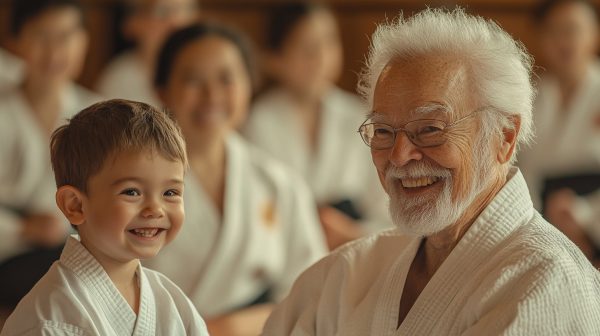SEO Audit Pricing – Great Boost For Your 2025 Game
We examine all factors that affect SEO audit pricing, including the scope of the work and the pros’ expertise.
We lay out different pricing structures, such as hourly rates and project fees. You’ll know what to expect at each price point.
You should know an SEO audit is vital to your online presence. Be ready to choose a pricing plan that fits your budget and needs.
SEO Audit Pricing

The Importance of an SEO Audit
An SEO audit is similar to a health check-up for your website. It finds its strengths, weaknesses, and areas needing work to improve its visibility and performance in search engines. It is the backbone of a successful digital marketing strategy. It shows how well your site is optimized for organic search.
❗ Always analyze the website. It will uncover insights about keyword rankings, on-page SEO, and off-page SEO. It will grant you a better user experience and sharper lead-generation strategies.
Understanding the Benefits for Your Website
Any business wanting to boost its online presence must know the benefits of an SEO audit. It will assist in attracting more targeted traffic to its website.
A deep analysis of your website will find areas to fix. You may need to optimize site speed, mobile usability, or your content strategy.
Data-driven decisions stem from thorough audits, aligning marketing with goals. A well-crafted report guides user experience improvement, visitor attraction, and customer loyalty cultivation. The roadmap empowers you to transform insights into action, optimizing your digital presence for lasting success.
To save you time and effort, use the following link to quickly reach out to an SEO expert.
The button will redirect you to the Upwork freelance platform, where you can schedule 30-minute consultations for $30 or 1-hour consultations for $60.
Factors that Affect SEO Audit Pricing
When considering an SEO audit, know what affects the price. It assists you in choosing options that fit your budget and satisfy your clients.
Many factors affect the cost. They include the work’s scope, the agency’s experience, and any extra services it offers.
❗ The how to:
Know the different pricing models, hourly rates, and fixed prices. Customize your SEO strategy to fit your budget. Get the best value for your money.
Scope of Work
The scope of work in an SEO audit is key to pricing. It outlines the specific tasks and deliverables.
Keyword research uncovers potential terms to boost search visibility. Technical SEO examines site performance, crawlability, and mobile responsiveness. Site architecture analysis provides optimal indexing and user experience. Breaking down the components reveals the true scope of your SEO investment. It shows what you’re paying for and why it matters.
The detailed project scope assists in setting realistic agency fees. It aligns expectations, making collaboration smoother and improving results.
Experience and Expertise
The experience and expertise of the agency you choose for your SEO audit will really shape both the pricing and quality of the service you receive.
When you’re checking out an agency’s skills, it’s important to see how closely they stick to industry standards and best practices. For example, agencies that know the latest algorithms usually do better. Take Agency X, for instance; they used a tried-and-true framework to turn around a struggling website. Thanks to their strategic approach, that site saw a whopping 150% increase in organic traffic within just six months.
On the flip side, there’s Agency Y, which didn’t have the same level of experience and ended up making only minor improvements. Really highlighting how having skilled professionals on your side will make a huge difference in your SEO results.
Additional Services Included
When you’re researching SEO audit options, look for any additional services included in the pricing model.
For example, consultation services provide personalized strategies tailored to your specific business needs, guaranteeing that the audit recommendations are good on paper and actually actionable and effective.
Next, competitor analysis offers insights into your market position. It aids in finding gaps and opportunities to exploit.
Don’t underestimate ongoing support. It keeps your business aligned with your changing digital marketing goals.

Types of SEO Audit Pricing Structures
SEO audit costs vary widely, offering diverse options to match your budget and objectives. Hourly rates, project fees, and monthly retainers each present unique advantages. The pricing models differ in their transparency and cost-efficiency, allowing you to select the most suitable approach for your specific needs and financial constraints.
Hourly Rate
An hourly rate pricing model for SEO audits is very flexible. It’s perfect for small projects or if you want to control your budget.
The approach allows you to examine each phase of the audit closely, so you may easily adapt to any changing needs that pop up during the process. For example, if the findings show you need to check technical SEO, you may adjust without the hassle of fixed pricing.
Refine your strategy dynamically with the flexible model. Allocate hours to key areas such as keyword analysis or content optimization freely. Avoid rigid scopes. Boost efficiency through adaptability. Foster collaboration. Continuously fine-tune approaches to match your unique objectives. The model empowers ongoing strategy refinement, creating an agile framework for achieving your changing goals.
Project-Based
SEO audits with project-based pricing have a fixed price. It covers everything in the project scope.
Upfront clarity fosters robust partnerships, setting expectations from day one. Fixed costs banish budget anxieties, letting you allocate resources confidently. The pricing model suits wide audits with defined goals, allowing you to assess the investment’s alignment with your objectives. Transparency reigns, eliminating the uncertainty of variable expenses and empowering informed decisions.
Monthly Retainer
A monthly retainer for SEO audits will give you support and scalability. It’s perfect for maintaining and improving your digital presence over time.
Consistent partnerships allow for ongoing, custom optimization to meet your needs. It allows for quick strategy adjustments based on real-time analytics. Regular performance reviews track progress and goal refinement.

What to Expect from Different Price Points
Knowing what to expect from different price points in SEO audits will support you in choosing the right service for your budget and quality needs.
You might get some basic audit features if you’re looking at low-end pricing. Mid-range options usually offer a better analysis and tailored strategies to boost your efforts.
If you’re considering high-end pricing, you’re looking at extensive services that include advanced technical SEO, competitor benchmarks, and personalized consultations.
Low-End Pricing
Basic SEO audits give a quick look at your site’s performance. They provide a brief analysis and limited keyword insights. The cheap tools are suitable for checking your site’s status. But, they often lack the depth needed to build a strong development strategy. To truly promote your online presence, consider deeper audits. They will assist in finding subtle opportunities for growth and optimization.
If you’re on a tight budget, it may be a cheap way to fix urgent issues, such as page errors, or get optimization tips.
❗ Just keep in mind that the assessments might not include competitive analysis or detailed technical reviews, limiting how well you maximize your online presence.
When making a budget decision, weigh the trade-offs. You must balance thoroughness and affordability.
Mid-Range Pricing
Mid-range SEO audit pricing usually brings a better analysis. It balances cost and quality. You should expect an in-depth traffic analysis. It should spotlight current visitor patterns and reveal growth areas.
Competitor analysis is also key. It reveals market positioning. It shows where to improve for a competitive edge. You’ll get tailored on-page SEO tips. They will improve user experience and raise your search engine rankings.
High-End Pricing
Regarding high-end pricing for SEO audits, you’re looking at a service that goes way beyond the basic offerings. Think of it as the VIP treatment for your website, complete with advanced technical SEO and ongoing support.
It improves your digital marketing and shows you want great results. Companies that choose audits often see higher returns on their investment. Their strategies resonate with their target audience and meet industry benchmarks.
Take, for example, a case study of a leading e-commerce brand. After they invested in a thorough, high-end audit, they saw a whopping 150% increase in organic traffic. The audit found major gaps in their SEO work. It proved the value of a detailed analysis and regular tweaks.

Choosing the Right SEO Audit Pricing Structure for Your Budget
When choosing an SEO audit within your budget, evaluate your needs. Then, match them with the services different agencies offer. Consider aspects such as the scope of your project, the level of service you need, and your long-term digital marketing goals.
Factors to Consider
When setting a price for your SEO audit, consider a few factors. It will guarantee it fulfills your client’s needs and the project’s requirements.
First, understanding the project scope is vital. It directly impacts how detailed and time-consuming the audit will be. The agency’s reputation is important. A solid track record means they usually charge a bit more. Their higher fees reflect their proven results and reliability.
Many agencies also offer extra services, such as ongoing optimization and detailed reporting, which boost the value you provide. Being clear about pricing avoids surprise costs. It builds trust and keeps you within budget.
SEO Audit Pricing – Great Boost For Your 2025 Game Read More »


































